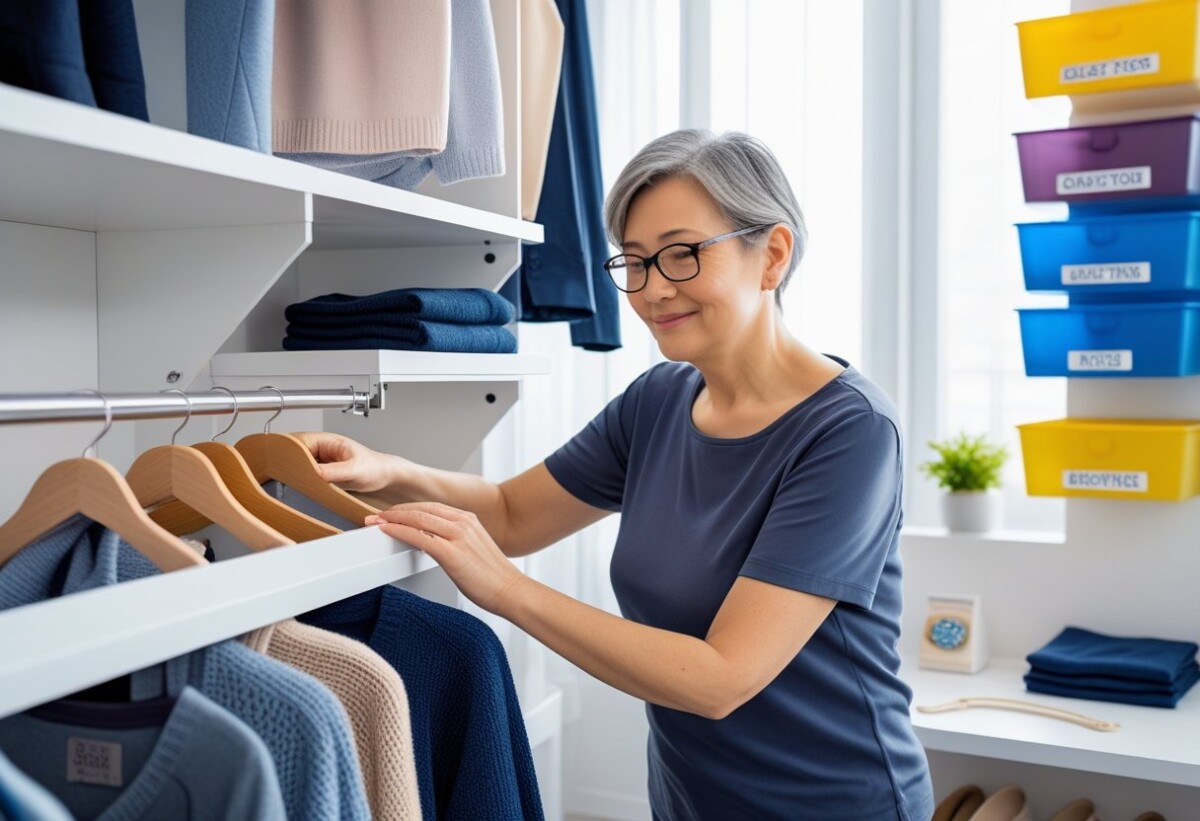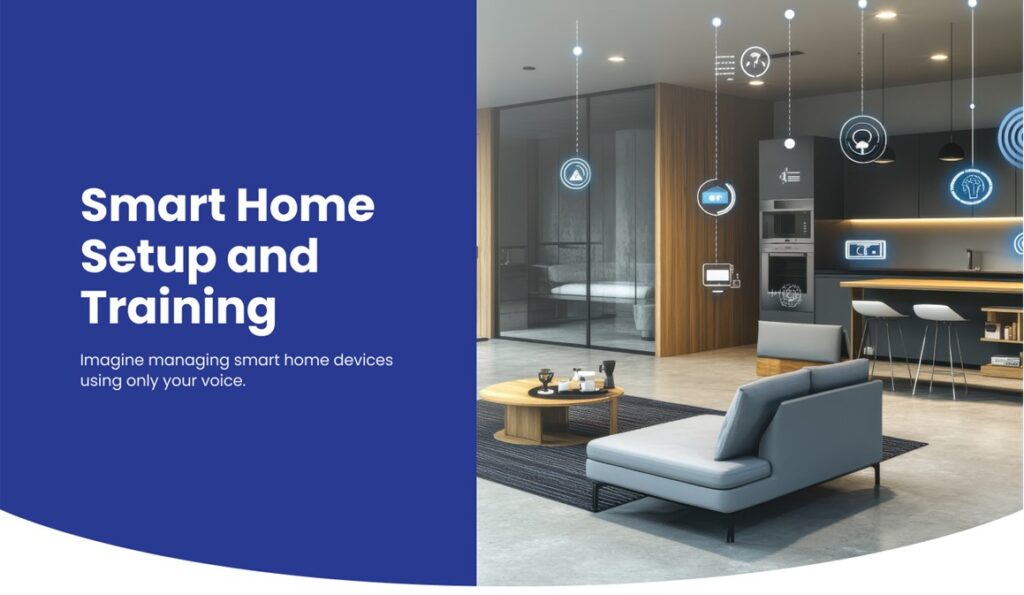Clothing Organization and Dressing Aids for People with Low Vision

Essential Clothing Organization Strategies for Low Vision
Efficient clothing organization can make daily dressing tasks more manageable for individuals with visual impairment. Practical strategies such as organizing clothes by color and texture, optimizing closet layouts, and using adaptive storage solutions can greatly increase independence and ease of use.
Organizing Wardrobe by Color and Texture
Sorting clothing by color is a valuable technique for those with low vision. We recommend placing similar colors together, and using high-contrast dividers or tactile tags to distinguish between items. For example:
- Attach textured tags (velcro, safety pins, or fabric swatches) to sleeves or collars to identify color or pattern.
- Utilize large print labels or Braille labels for added clarity.
Another important method is to separate items by texture. Sweaters, denim, cotton shirts, and formal wear each have unique fabrics that can be easily identified by touch. This approach allows us to select the preferred item without the need for visual cues. Apps and talking color identifiers may also be helpful for quickly checking colors, as suggested in resources like Navigating Style: Fashion Solutions for the Blind and Visually Impaired.
Effective Closet Organization for Accessibility
Arranging the closet for easy access ensures that clothing items are reachable and safely stowed. We recommend hanging clothes at a consistent height and using open shelves whenever possible to avoid closed containers that obscure contents.
Consider grouping clothing by type (e.g., shirts, pants, dresses) using hanging organizers or shelf dividers. Placing the most-used items in the center or at waist height makes them easier to grab.
It also helps to use bright or contrasting shelf liners, so items stand out visually. Hooks on closet doors can provide quick access to essentials. For people who share a closet, assigning specific areas or rods prevents mix-ups. Detailed advice for closet accessibility can be found at Low Vision Wardrobe Organisation.
Using Storage Systems and Closet Organizers
Specialized storage systems can minimize the frustration of finding the right item. Storage bins with tactile or Braille labels, divided drawers, and hanging closet organizers all play key roles.
We advise using clear-front boxes or open baskets, so contents are easier to distinguish by touch or limited vision. Consider small cubbies, stackable trays, or pull-out baskets to sort shoes and accessories.
Consistent placement is crucial: always return items to the same compartment after laundry to maintain order. For more tips on adaptive storage options, we recommend tools highlighted by VisionAware’s daily living skills resources, which cover clothing labeling and closet organization aids for those who are blind or have low vision.
Dressing Aids and Tactile Systems for Independent Living
Ensuring accessible and efficient dressing routines supports independent living for people with low vision. Specific aids, tactile systems, and organizational methods improve safety, confidence, and ease while getting dressed each day.
Braille Clothing Tags and Braille Clothing Identifiers
Braille clothing tags make it easy for people who are blind to distinguish between garments without the guesswork. These tags can be attached to clothing items with sewn-in labels, making laundry and daily outfit selection far more manageable.
Several styles exist, including reusable plastic braille tags that affix to shirt tags or sewn-in hems, and iron-on options for permanent use. Braille clothing identifiers allow users to feel raised dots describing color, pattern, or size so that getting dressed independently becomes straightforward.
Products such as braille clothing tags are available in pre-labeled sets (e.g., “black shirt,” “blue pants”) and can be paired with custom tags for favorite clothing items. Braille tags support organized closets by reducing confusion and ensuring matching outfits.
Tactile Pens and Safety Pins for Clothing Items
Tactile pens provide another method for labeling clothing using raised marks or symbols. These pens create dots, lines, or shapes directly on clothing labels or special fabric tags, giving us a non-braille but tactile alternative for identification.
Safety pins are also widely used for tactile labeling. Attaching a unique arrangement of safety pins to the inside tag of shirts, pants, or socks quickly distinguishes between similar items. For those not fluent in braille, these systems are simple, effective, and can be tailored with a variety of pin combinations or materials.
Both tactile pens and safety pins are affordable and versatile dressing aids for blind individuals. They help eliminate uncertainty and promote independence in daily routines.
Thick Sock Locks and Adaptive Hangers
Keeping pairs of socks together after washing is a common challenge. Thick sock locks are specifically designed independent living aids that secure pairs throughout the laundry process. They are easy to grip, even for users with dexterity issues, and use different shapes or braille to identify pairs by color or pattern.
Adaptive hangers often include tactile or color-contrasting features, such as notched grips or rubberized textures. These hangers help sort clothing by category—like workwear, casual clothes, or outerwear—and make retrieving garments from the closet much simpler.
Together, tools like sock locks and adaptive hangers help maintain a neatly organized wardrobe. This approach reduces frustration, keeps clothing items in order, and supports independent wardrobe management for those with vision loss.
Assistive Technology Solutions for the Visually Impaired
Assistive technology has transformed how people with vision impairment approach clothing and wardrobe organization. Today, digital tools, enhanced lighting, and talking devices give us new independence and confidence in daily routines.
Colorino Talking Color Identifier and Digital Labeling Tools
The Colorino Talking Color Identifier is a leading-edge device designed for people who are visually impaired. With this handheld tool, we can point it at a garment or fabric to hear an audio description of the color, such as “light blue” or “dark red.” This allows us to select matching or coordinating outfits with confidence.
Digital labeling tools also offer practical solutions. For example, tactile labels, Braille tags, or QR code stickers can be applied to clothing. Pairing these with a smartphone app or talking barcode scanners helps us identify specific clothing items, care instructions, and even outfit combinations. These tools greatly reduce mistakes and streamline our dressing process.
If you want more details about dressing aids and tech for low vision, including practical examples, more information is available online.
Mobile Apps for Closet Management
Mobile apps designed for closet management simplify organizing clothes for people with visual impairments. These apps allow us to inventory our wardrobe by taking photos, adding audio notes, and categorizing clothes. Apps also provide reminders about what is clean, track outfits, and notify when items need to be laundered.
Using an accessible app with voiceover support, we can check the details of each item and even plan outfits in advance. Some apps integrate with labeling tools and recognize QR or barcodes placed on clothing. This reduces confusion, ensuring we always know exactly what’s in our closet without relying on memory alone.
Closet management apps can work well alongside digital labeling tools for an even smoother experience. These strategies are highlighted by organizations specializing in assistive technology for visually impaired.
Lighting Enhancements for Wardrobe Navigation
Lighting plays a crucial role in navigation and clothing selection for those of us with low vision. Improved lighting options include bright LED fixtures, motion-sensor under-cabinet lights, and adjustable lamps to illuminate closets and drawers. Thoughtfully placed lighting minimizes shadows and enhances color contrast, making it easier to distinguish different clothes.
Task lights or flexible arm lamps aimed directly at clothing help us see patterns, labels, and seams. Some closet lights offer adjustable brightness or color temperature to accommodate our specific level of vision impairment.
Many professionals recommend a combination of natural daylight and powerful artificial lights for the best visibility. For further tips and recommended devices, the American Academy of Ophthalmology provides a helpful overview.
Maintaining and Caring for Clothing with Low Vision
Proper care and organization of clothing are essential for independent living, especially for people with low vision or who are blind. Using the right laundry strategies and identifying cleaning supplies can simplify daily routines and help keep clothing fresh and organized.
Laundry Tips for the Blind or Low Vision
We can make laundry manageable by adapting our routines and using assistive tools. Tactile labels, such as safety pins, sewing snaps, or braille tags, can help us sort and identify clothing by color, fabric, or family member. These labels can be attached to sleeves, tags, or waistbands for easy access.
Sorting laundry with divided hampers can save time and prevent mix-ups. For example, we might use separate baskets for whites, colors, and delicates. Consider using mesh laundry bags for smaller items like socks, further reducing the risk of losing pieces.
To measure detergent, pre-measured pods or cups labeled with bump dots allow us to add the correct amount without straining our vision. We can also set timers or use machines with audible signals to track wash cycles. Additional ideas, including clothing care routines and ways to streamline the process, are available at VisionAware.
Identifying and Organizing Cleaning Supplies
Effective organization helps us easily locate cleaning supplies and stay safe. We recommend storing laundry detergents, stain removers, and fabric softeners in consistent locations, such as a designated shelf or cabinet.
Labeling bottles with large print, braille, or tactile markers like rubber bands makes it quick to identify items by touch. For added safety, it’s best to keep hazardous products on higher shelves and away from food storage areas.
For low vision, using bright-colored baskets or containers can make items more visible. We also suggest arranging supplies in the order they are used, reducing the need to search during laundry. More advice on organization and labeling for independent living can be found through Wisconsin Department of Health Services.
Clothing Organization and Dressing Aids for People with Low Vision
Frequently Asked Questions About Clothing Organization and Dressing Aids for People with Low Vision
People with low vision benefit from accessible clothing organization systems, supportive living aids, and specialized tools that maximize their independence in daily tasks. Structured approaches and innovative devices contribute to safer food preparation, streamlined dressing routines, and practical problem-solving at home.
What are the best dressing aids for individuals with visual impairments?
Some of the most effective dressing aids include tactile clothing labels, color-coded tags, and braille or audio garment markers. Button hooks, zipper pulls, and sock sorters help manage fastenings and outfit organization. We also recommend using organizing systems in dresser drawers with high-contrast linings to differentiate clothing items easily.
How can people with low vision safely and effectively prepare food?
We suggest using tactile marking systems for kitchen appliances and utensils to identify controls by touch. High-contrast cutting boards, large-print measuring cups, and non-slip mats greatly increase kitchen safety. Adequate lighting and clear counter layouts reduce common hazards during meal preparation.
Which household items are particularly helpful for those with low vision?
Helpful items include talking clocks, high-contrast or large-button remote controls, and raised dot labels for common surfaces. We also recommend bright lighting, evenly distributed in closets and dressing areas, to more easily identify clothing and organize laundry needs.
What types of independent living aids are available for seniors with visual disabilities?
There are a wide range of living aids, such as magnifying glasses, audio-enabled devices, and talking medication dispensers. Many seniors also benefit from guided reading tools, adapted phones, and assistive technology for labeling clothes and organizing spaces.
How do dressing aids improve the independence of people with visual impairments?
Dressing aids reduce reliance on others by making it easier to identify, coordinate, and wear clothing with confidence. Adapted tools and labeling systems foster a sense of autonomy, allowing users to manage everyday routines safely and efficiently.
What support groups exist for people who are blind or have low vision?
There are both local and national organizations offering group support, including in-person meetings and virtual sessions. Many groups focus on resource sharing, advocacy, and social connection to help people strengthen their coping and daily living skills. Some local resources can be found through agencies specializing in low vision and blindness support.
How Can We Help
TechCare
Regain confidence and simplify your daily routines with our TechCare Senior Technology Training at New England Low Vision and Blindness. Whether it’s learning to navigate your smartphone, set up video calls with loved ones, or manage online appointments, our experts provide personalized, one-on-one support tailored to the unique needs of older adults. From iPhones to Alexa and everything in between, we make technology accessible, approachable, and stress-free.
With our TechCare service, we help you learn, set up, troubleshoot, and feel confident using the technology that matters most to you! Contact us today for a free consultation. Visit https://nelowvision.com/retirement-community-ideas/ to learn more.
Smart Home
Enhance your independence and safety with our Smart Home Service at New England Low Vision and Blindness. From voice-activated lighting to accessible home automation systems, we specialize in customizing your living environment to meet the needs of individuals with low vision. Discover how our experts can help you create a smarter, more functional home by visiting our Smart Homes page https://nelowvision.com/smart-homes/
With our Smart Home service, we help you learn, purchase, set up, and train the right option for you!





